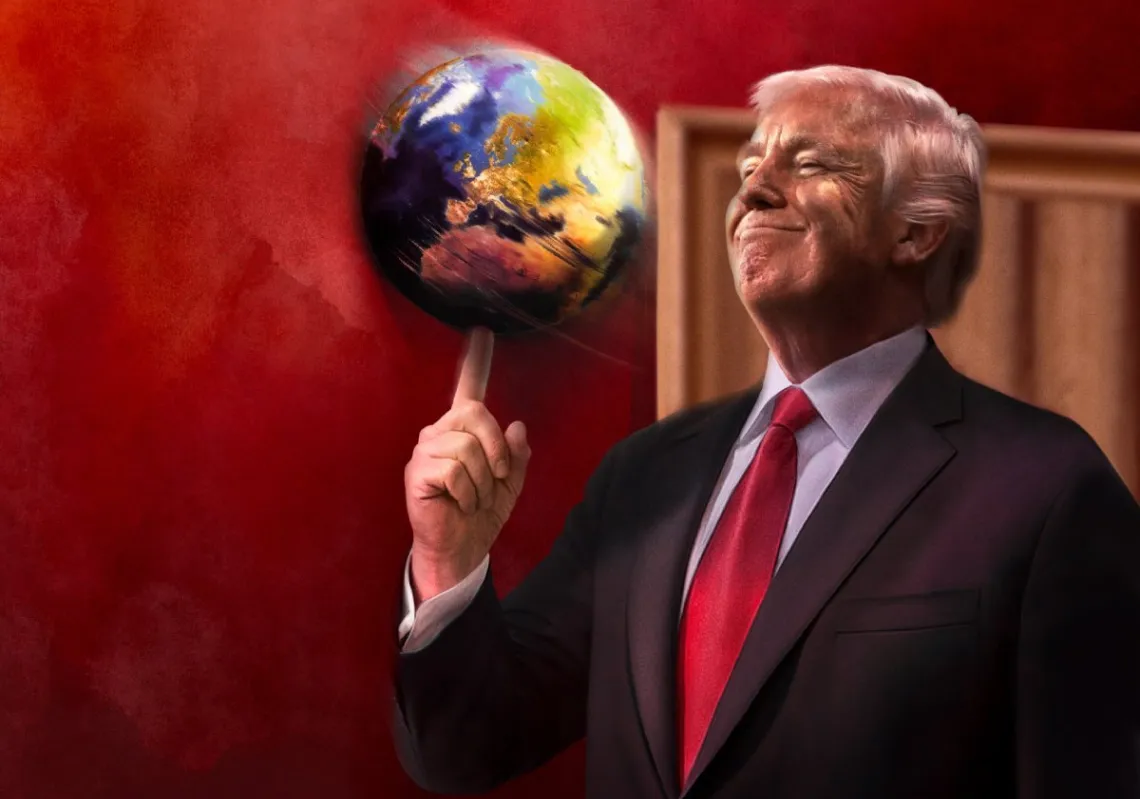WHEN NOT TO DISENGAGE
There are many areas in which China and the advanced economies can avoid severing economic ties. (Note that the logic here applies both to the United States and to other advanced economies.) These include activities where there is no transfer of technology that confers proprietary information or any strategic advantage, where no vulnerabilities arise from supply or demand dependence upon the other, and where the predation of one another’s markets is not a concern. Most U.S. imports from China are not a threat to our national security, despite Trump's claiming as much as the basis for the steel and aluminum tariffs. Nor do they threaten the health of the U.S. economic ecosystems. These imports include cheap Chinese products such as apparel, toys, furniture, and consumer electronics upon which lower-income Americans rely. They consist of more than 40 percent of China’s exports to the United States and could easily be placed on a whitelist. This also applies to most U.S. exports to China, including copper, pulpwood, plastic materials, logs and lumber, and medical equipment. Together, these products add up to 12 percent of total U.S. exports to China. We can and should continue to buy these products from China and vice versa. Both countries could, of course, source these goods elsewhere but would face higher prices for doing so. Categories of U.S. exports to China that involve more advanced technologies (such as semiconductors and aircraft), or are critical to food security (such as soybeans) or energy security (such as oil, gas, and coal), are more complicated to whitelist from Beijing’s perspective. If the United States were the sole producer of these goods, or if it were not possible for China to stockpile them, buying it ample time to adjust to supply disruptions like an embargo, then Beijing might find these products unsuitable for a whitelist. The reality is that China can find plenty of alternative suppliers for most of these products. It can also stock them, turn to substitute inputs, or otherwise hedge the risks of a U.S. cutoff. A high U.S. share in China’s imports does not, therefore, necessarily rule out the potential for a whitelist. By working together to identify areas of trade in which divergent political, developmental, and strategic models do not create national security risks, Washington and Beijing, along with other advanced economies, can reduce the costs of disengagement.
DISENGAGING PEACEFULLY WHEN NECESSARY
In areas where advanced economies believe that the tide of statism in China does necessitate higher seawalls, the goal should be peaceful disengagement rather than bellicose threats to disrupt 40 years of global network building. There will be many areas in which previously encouraged activity may no longer be viewed as advisable, or may need to be curtailed. For instance, in anticipation of China’s convergence with market economy norms, the United States has since 2000 permitted largely unfettered Chinese acquisition of U.S. firms that would not ordinarily be permitted between rivals. Indeed, there was no better proof of the United States’ liberal intentions and hopes toward China than this openness to acquisitions. In a host of sectors where China prohibits or limits foreign participation—energy, infrastructure, financial services, automobiles, media and entertainment, and others—the United States and other OECD nations maintained a largely open door. Rhodium Group’s U.S.-China Foreign Direct Investment Project database makes this clear. Measures of openness between China and those nations show how far apart their openness levels remains today. If China had not espoused convergence in the past, advanced economies would not have opened their doors as widely as they had to trade and investment. If China is steering away from the OECD model today, then those erstwhile partners will insist on reciprocity for the future and revisit existing activity from the past. China’s non-convergence is evident in policies, such as Made in China 2025, which preordain market shares for domestic and foreign firms rather than leaving outcomes to market forces. Competition is at the root of American economic and political culture, and at that of almost every other advanced economy. If China steers away from that, then Western nations will naturally turn from managed integration to something more self-protective. What would this turn require? For one thing, rather than generally treating investment as benign unless proved otherwise (which is the current practice), developed nations are likely to reverse the burden of proof and ask firms from non-convergent nations to demonstrate their market friendliness case by case. That might involve analyzing a firm’s capital costs, corporate governance norms, internal rates of return, or other variables that can be distorted by heavy, Chinese-style state intervention. For trade and investment activity that no longer meets the criteria for whitelisting, U.S. and Chinese officials need to work together in deciding how to proceed, rather than resorting to Cold War threats of quarantine and containment. For some areas of trade, disengagement can be prevented by taking steps to demonstrate that there is no reason for concern. For example, if the issue is reciprocal access to each other’s markets, China could take steps to fully open the door to foreign participation in its domestic economy. There will be other cases where mitigation is possible. For instance, Washington might be more comfortable with Chinese joint-venture investments or minority roles rather than full control over an entity in the United States. In trade, the United States may be amenable to leaving the door open to imports from a specified set of firms operating in China rather than closing off a category of trade entirely. Finally, in cases where neither prevention nor mitigation are possible, full-blown disengagement should be managed with the goal of causing the least amount of pain and disruption to the business sector rather than imposing the maximum of discomfort, as politicians are threatening today. [caption id="attachment_55255911" align="alignnone" width="4364"]
 A Chinese employee sorts hot red steel at a steel plant in Zouping in China's eastern Shandong province on March 5, 2018. (Getty Images)[/caption] The cost of disengagement will be severe for China, the United States, and third parties. It is possible that when China and the United States stare these hard realities in the eye, with adjustment costs likely to run into the trillions of dollars over the next decade, they will seek an alternative to disengagement. But with Beijing working in earnest to hardwire its system not to converge with advanced economy models, this grows more difficult by the quarter. Is China willing to cancel or dilute policies such as Made in China 2025, with its state-determined ratio of Chinese and non-Chinese market shares at home and abroad? Can Europe, Japan, the United States, and other advanced economies sleep easily while permitting China to compete fully in their markets without reciprocal access to China? Some see the West resolving this conundrum by employing the same policies as China. But Beijing’s take-my-word-for-it economic model is not feasible for the liberal West. It is questionable whether it is even working for China; but with numerous basic economic data series no longer publically available, it’s hard to say. Moderating the adjustment costs through a managed disengagement, rather than rolling the dice on an untethered trade war approach, is the responsible move.
A Chinese employee sorts hot red steel at a steel plant in Zouping in China's eastern Shandong province on March 5, 2018. (Getty Images)[/caption] The cost of disengagement will be severe for China, the United States, and third parties. It is possible that when China and the United States stare these hard realities in the eye, with adjustment costs likely to run into the trillions of dollars over the next decade, they will seek an alternative to disengagement. But with Beijing working in earnest to hardwire its system not to converge with advanced economy models, this grows more difficult by the quarter. Is China willing to cancel or dilute policies such as Made in China 2025, with its state-determined ratio of Chinese and non-Chinese market shares at home and abroad? Can Europe, Japan, the United States, and other advanced economies sleep easily while permitting China to compete fully in their markets without reciprocal access to China? Some see the West resolving this conundrum by employing the same policies as China. But Beijing’s take-my-word-for-it economic model is not feasible for the liberal West. It is questionable whether it is even working for China; but with numerous basic economic data series no longer publically available, it’s hard to say. Moderating the adjustment costs through a managed disengagement, rather than rolling the dice on an untethered trade war approach, is the responsible move.LEAVING ROOM FOR REENGAGEMENT DOWN THE ROAD
If China and the United States exhaust the alternatives and take the disengagement route, it would be wise for their policy professionals to build in opportunities for reengagement down the road, because the current divergence in political and economic models may not last forever. China has gone through many love-hate cycles with foreign influences over its history, especially during the past 200 years. Nativism has often held China back from its economic potential, which is why at the end of the last anti-foreign cycle in 1978 per capita income was around $350 a year—half the level of Togo that same year. If the West maintains its fidelity to free markets, free speech, individualism, and democracy, there remains good reason to imagine that China will eventually want to be part of the resulting dynamism and to reconsider its policy choices in the future. The United States can build pathways to that conversation by defining which elements of market liberalism are essential, and then gauging objectively whether China is convergent or divergent from them. (This is the purpose of the China Dashboard that Rhodium Group maintains with the Asia Society Policy Institute, which tracks whether China is carrying out the economic reforms it had laid out in 2013.) At the government level, even if engagement no longer represents U.S. strategy, it should be employed to reduce the risk of conflict with the second-largest economy in the world. This means that dialogue remains essential. It must be done on a regular basis, not to manufacture a superficial appearance of merging norms but simply to avoid unnecessary and counterproductive blowups. Trade wars are not easy to win. Dialogues, on the other hand, are not inherently easy to lose. This article was originally published on ForeignAffairs.com.









